Hulda Hearn Shanks (1832-1885)
By Eilene Lyon
“She holds that true companionship between man and woman necessitates the possession and the exercise by both of equal rights, privileges and franchises, believing, as she does, that in nothing else is the civilization of any people apparent as in the closer and ever closer approximation of woman’s conceded rights with man’s.”
By 1874, Hulda Hearn Shanks had already lived an adventurous life, but in Colorado Territory she faced her biggest challenge yet: crossing treacherous Rocky Mountain passes to reach her seriously ill son, to hopefully save his life.
Hulda grew up on a farm near Portland in Jay County, Indiana, one of at least eight children of John and Nancy Hearn. In October 1852, she married the former county prosecutor, not long after the death of his first wife. (Deborah Wilson Shanks died of a bronchial ailment after saving her baby girl from their burning house.)
John P.C. Shanks was the son of a Quaker woman and a man who abhorred the institution of slavery. They left Virginia for Indiana because of it. John made a good companion for Hulda, who had determined she was equal to any man. They both favored progressive causes, not only abolition and temperance, but equal rights for all.
They had five sons together, but only two survived infancy: John C.M. Shanks and Cassius M.C. Shanks. Hulda also reared Deborah’s daughter, Hannah (Helen). John was elected to represent the Fort Wayne district in the U.S. Congress in 1860. The Civil War broke out not long after he took office and he fought with a New York regiment at the first Battle of Bull Run.
John lost the next election because he favored the draft, so he formed the 7th Indiana Cavalry and served as Colonel. After the war, he was breveted Major General. (A brevet rank is one in name, but without a corresponding raise in pay. In this case it was awarded retroactively, so essentially an honorary title.)
Gen. Shanks returned to Congress after the 1866 election and served four more terms. For a time he chaired the House Committee on Indian Affairs. He made forceful speeches regarding the treatment of Native Americans. He advocated for the removal of corrupt middlemen and a reversal of the policy to treat an entire tribe as guilty for the acts of individuals.
“That justice which we would invoke for ourselves and our families, and which our civilization and governmental organization secure to us, namely, that individual responsibility of action that holds each person liable for his own conduct, and not for his race or his race for him.” – John P.C. Shanks
Hulda Shanks traveled to Washington with her husband and dined at the White House. She also traveled with him to the western U.S. visiting various tribes and was equally at ease and comfortable dining with the Native Americans.
They were on one of these trips west, along with their two sons, in 1874. They parted with their older son, John C.M. in Cheyenne, Wyoming, where he joined the Hayden party heading to Colorado to survey for the summer. Young John, just 17, worked as assistant topographer, a position he no doubt obtained with the assistance of his father.
The rest of the family went to Utah, Nevada, California, and Idaho before returning to Denver, Colorado. While there, Hulda had a feeling that her son was gravely ill, but John told her she was being too sensitive and the boy was fine. They headed home to Indiana.
Not long after, a telegram came that confirmed Hulda’s intuition. They rushed back to Denver and took a stage from there to Fairplay and another to Granite, the last outpost of white settlement in the area at the time.
Major Stevenson, who met them there, assumed Hulda would remain in town while John accompanied him across the mountains to where young John lay gravely ill at a camp along Capitol Creek (south of present-day Snowmass). Undeterred, Hulda mounted astride an “Indian pony” with leather straps for stirrups and joined the group.
The aspens waved their golden tresses at her as she rode through bows of deep blue-green spruce. As they ascended above treeline, the weather turned and they were beset with sleet and snow. The pony stumbled at times in the unstable scree, threatening to tumble Hulda over the precipice.
Despite great discomfort, Hulda persisted in the three-day journey. Along the way, they encountered a band of Utes who apparently expressed astonishment that any woman would attempt to traverse those rugged ranges.
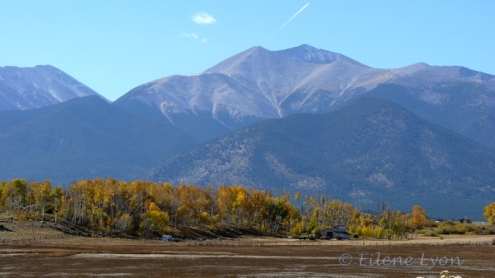
Reaching the camp, she found that her son’s caretakers had already dug his grave and selected a Bible passage for his funeral. John managed to be aware of his mother’s presence for a short time before losing consciousness again. She immediately made him a more comfortable bed and began administering care.
When the men who had been watching over him saw this, they realized they could have done more to aid the ailing youth. Hulda reassured them that they had done a good job and that her ministrations were something a mother would think to do.
The interactive map above shows a rough estimate of the route taken by the Shanks and the Stevenson party from Twin Lakes to Capitol Creek. I do not have a record for how far up the creek the Hayden party camp was established. You can zoom to various locations and click on the paths for more information.
With worse weather closing in, they built a covered travois to transport the boy back over the same rough trail they had come in on. Fortunately, he did recover from his illness, but it took months.
“What a human being could suffer more than the boy did, and live, would be difficult to imagine.”
The story is that Dr. F.V. Hayden named a peak near the camp Mount Shanks, but my research did not support this claim.
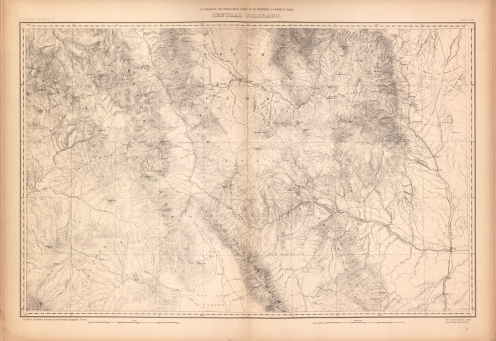
Hulda returned to the Colorado mountains in the 1880s with her daughter-in-law, who suffered from TB. Unfortunately young John’s wife succumbed to the disease. Not long after, Hulda herself lost a battle with cancer.
(John C.M. had two other wives, and oddly became brother-in-law to his own father when John P.C. married his daughter-in-law’s older sister after Hulda’s death.)
Hulda Shanks, though she did not live long enough to see women achieve the franchise, was clearly a woman with a sense of her own strength, will, and abilities. She proved to be ahead of her time in asserting her rights as far as possible in her day.
Feature image: The San Juan Mountains of southwestern Colorado, to give you an idea of the rugged terrain in the Colorado Rockies. (E. Lyon 2019)
Sources:
Biographical and Historical Record of Jay and Blackford Counties, Indiana. 1887. The Lewis Publishing Company, Chicago, pp. 598-609.
Historical Hand-Atlas Ilustrated…Twelve Farm Maps and History of Jay County, Indiana…1881. H.H. Hardesty Company, Chicago, IL, pp. 221-223.
“Scientists on the March” The Inter-Ocean (Chicago), July 31, 1874, p.2 – via Newspapers.com.
“The Moral Side of the Question Letter from Gen. Jno. P.C. Shanks, Late Chairman House Committee on Indian Affairs.” New York Times, May 4, 1873, p. 3 c. 1.
“What a Mother’s Love Will Accomplish” The Milan Exchange (Milan, Tennessee) October 22, 1874 p. 1 – via Newspapers.com.

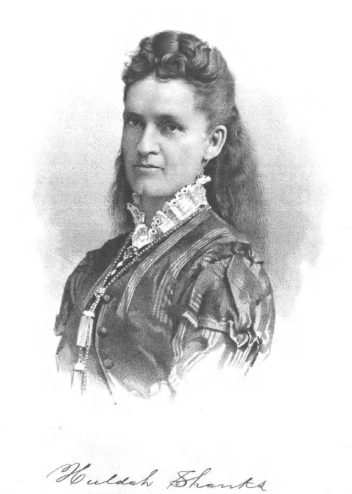
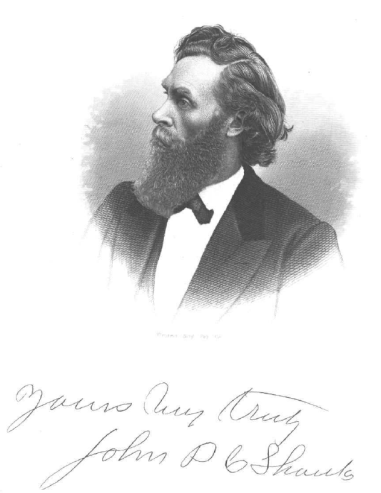
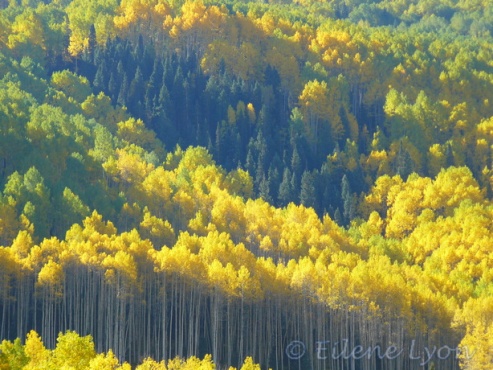
What a fascinating story!
LikeLiked by 1 person
Thanks, Joy. It’s something I came across while researching my family. They seemed like an interesting couple.
LikeLiked by 1 person
“Hulda reassured them that they had done a good job and that her ministrations were something a mother would think to do.”
This line reveals the kind and generous nature of her character. Tough gal, with a good heart.
LikeLiked by 3 people
It was a comment that really struck me as a telling one about her character, too.
LikeLiked by 2 people
The things people did mentally and physically back then is incredible.
LikeLiked by 1 person
And still do today!
LikeLike
Never underestimate a mother’s determination!
LikeLiked by 2 people
A real she-bear!
LikeLiked by 2 people
An excellent woman!
LikeLiked by 1 person
Someone I could aspire to be like!
LikeLiked by 1 person
A very interesting story. I loved Hulda’s tenacity and generosity of spirit. Your photos and map really help to visualize the setting and the difficult terrain they would have traversed.
LikeLiked by 2 people
Thank you, Heather. I enjoy writing and illustrating such tales.
LikeLiked by 1 person
You are most welcome!
LikeLiked by 1 person
Another wonderful story about an amazing person. The past is filled with so many people who did things I cannot fathom doing. Hulda’s drive to succeed is something else.
LikeLiked by 1 person
Her son must have had some of her tenacity to hold on as long as he did for her to arrive. That area she traveled through is now so popular (and expensive). Hard to imagine how rough it would have been in those days.
LikeLiked by 2 people
What a great story. I recently learned that Hulda was my paternal great grandmother’s name.
LikeLiked by 1 person
Oh really? It’s not a name I’d recalled coming across before. Thanks for reading!
LikeLiked by 1 person
I had never heard of anyone else with the name either. that’s why I mentioned it.
LikeLiked by 1 person
Thanks!
LikeLiked by 1 person
Wow, I wish I could have met Hulda and John—what remarkable people and so ahead of their times. Is she related to you?
LikeLiked by 1 person
The really were progressive! No, they aren’t relatives. I just came across their story while studying my family, who lived in Jay County. They were friends with John’s first wife Deborah’s family.
LikeLiked by 1 person
Hulda was a go-getter before the term was popular. We can’t imagine how rigorous the lives of our ancestors really were until we read it in a narrative like you have here. I liked the images and the map as it really enhances this story.
LikeLiked by 1 person
Thanks, Linda. Every time and place has its challenges. The raw wilderness is one we find hard to fathom today. Yet still there are many who find their way through this rugged landscape much the same way as Hulda did.
LikeLiked by 2 people
“Roughing it” gives many people joy and purpose. We went camping once when I was a kid. The tent leaked like a sieve and that was the death knell for any future camping expedition in our family.
LikeLiked by 1 person
I’ve been tent camping all my life . Only gave it up very recently. Sorry your experience didn’t “take.”🙂
LikeLiked by 1 person
Well Eilene, I wish it had “taken” because perhaps I am missing out on something that would have taken my love of nature even deeper.
LikeLiked by 1 person
Being immersed as with camping is a special way to experience the outdoors.
LikeLiked by 1 person
Yes it is – even RV camping is a good experience, though not as rustic and back to earth as tent camping.
LikeLiked by 1 person
What a remarkable woman Hulda was! I enjoyed reading about her.
LikeLiked by 1 person
A lot to admire there, for sure.
LikeLike
Hulda and John both sound remarkably progressive for their time. John’s annoying comment about her being “too sensitive” about her ailing son does bump him down a peg or two in my mind, though I could just be reading too much into it based on my own experiences with misogynistic men telling me to “calm down” or “stop being hysterical” when I dare to argue with them.
LikeLiked by 1 person
Yeah, I get what you’re saying, but then I tend to discount intuition myself. Not sure why.
LikeLiked by 1 person
What a remarkable lady!
LikeLiked by 1 person
No shrinking violet, that one!
LikeLiked by 1 person